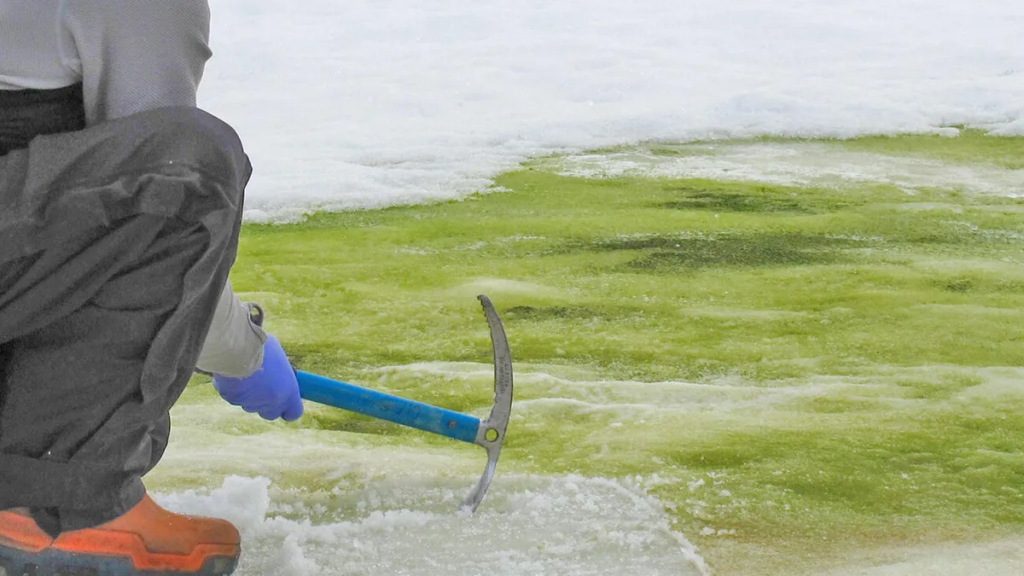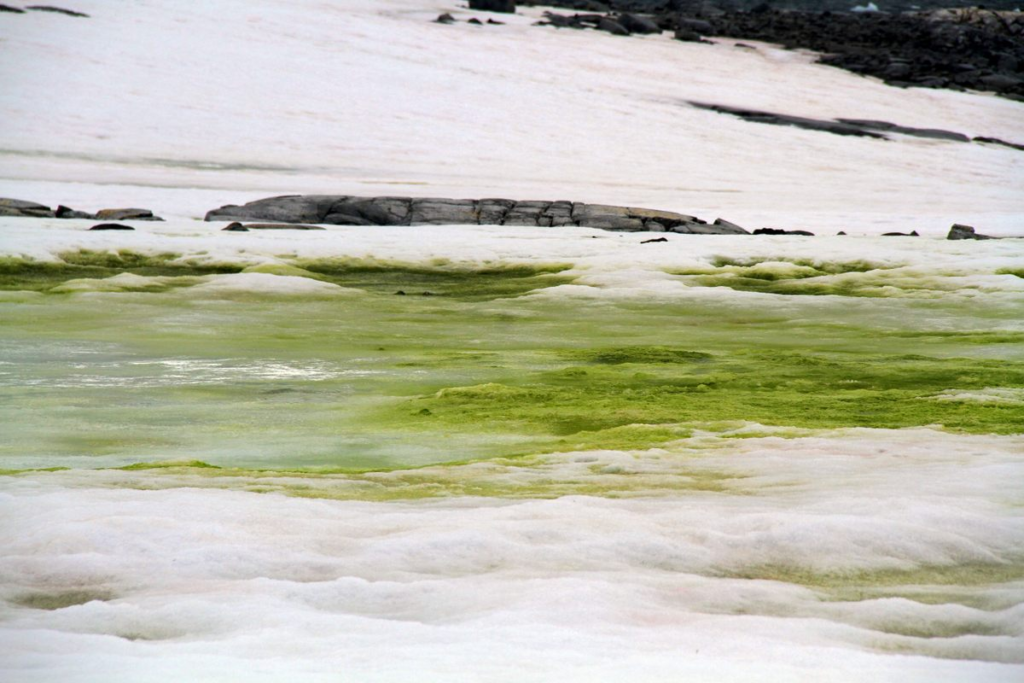Antarctica turning green is a worrying phenomenon that has alarmed scientists and environmentalists worldwide. Known for its icy white landscape, the southernmost continent is undergoing significant changes due to global warming and extreme weather events.
What was once a place of extreme cold, covered in ice and snow, is now experiencing a rise in vegetation, particularly mosses. According to a recent study published in Nature Geoscience, the green cover of Antarctica has grown 10-fold over the past four decades, a drastic and alarming shift that highlights the ever-growing impact of climate change.
The Unfolding Changes in Antarctica’s Landscape
For centuries, Antarctica has been the coldest and most desolate place on Earth, a landscape defined by its vast white plains. However, in recent years, a startling transformation has been taking place. Scientists have observed that Antarctica turning green is no longer an unusual or rare occurrence.
Read : Antarctica: A Journey to the Frozen Continent
Vegetation cover, which was only 0.4 square miles in 1986, has grown dramatically to nearly 5 square miles by 2021. This rapid increase in greenery has primarily been driven by warming temperatures on the Antarctic Peninsula.
Read : 10 Hardest Mountains to Climb in the World
Researchers from the University of Exeter and the University of Hertfordshire utilized satellite imagery and data to track the vegetation growth across the continent.

Their findings revealed that Antarctica turning green has accelerated dramatically in the last five years alone, with a growth rate of over 30 percent between 2016 and 2021. The greening is mainly composed of mosses, which thrive in the region’s increasingly warmer climate.
Though Antarctica remains largely covered in snow and ice, the rapid increase in plant life is unmistakable. What was once a pristine, untouched wilderness is now undergoing drastic transformations due to human-induced climate change.
Antarctica turning green is more than just a change in the landscape; it represents the deep and far-reaching effects of global warming, which has left no region of the Earth untouched, including the most remote and isolated places.
The Impact of Climate Change on Antarctica
The rise in greenery across Antarctica has raised concerns among scientists about the impact of climate change on the continent’s delicate ecosystem.
One of the main drivers of this transformation is the warming of the Antarctic Peninsula, which has been happening at a rate much faster than the global average.
According to the research team, the region is heating up due to human activities, especially the burning of fossil fuels that release greenhouse gases like carbon dioxide (CO2) into the atmosphere.
As CO2 levels rise, global temperatures increase, causing extreme heat events, even in a place as cold and remote as Antarctica.
In March 2022, parts of the continent recorded temperatures of up to 70 degrees Fahrenheit above normal, making it the most extreme heat event ever documented in Antarctica.
Additionally, during the summer months of 2024, the continent experienced temperatures that were 50 degrees Fahrenheit above normal, further contributing to the greening of the landscape.
The warming of Antarctica has not only resulted in the spread of vegetation but has also caused other concerning environmental changes. The West Antarctic Ice Sheet, for instance, is losing ice at an accelerated rate.

This has led to rising sea levels, which can have devastating effects on coastal communities around the world. At a conference held in Chile in August, nearly 1,500 scientists and researchers discussed the possibility that Antarctica may have reached a tipping point, a stage where climate change could lead to irreversible changes, including significant ice loss from the West Antarctic Ice Sheet.
The conference underscored the urgency of addressing climate change as the melting of ice and the rise of greenery in Antarctica could signify the beginning of a much larger environmental catastrophe.
As Antarctica turning green becomes a more widespread phenomenon, it raises crucial questions about the future of the continent and the planet as a whole.
What Antarctica Turning Green Means for the Future
The sudden greening of Antarctica may seem like an isolated event, but it is, in fact, part of a much larger global pattern of climate change.
The increase in vegetation cover across the continent is a symptom of the warming of the planet, driven largely by human activities. Antarctica turning green is not a sign of recovery or natural adaptation; rather, it reflects the damage being done to the Earth’s climate system.
As the vegetation grows, it could further accelerate the melting of ice by absorbing more sunlight, which raises surface temperatures. The loss of ice leads to rising sea levels, which can cause devastating flooding in coastal areas worldwide.
Moreover, the greening of Antarctica threatens to disrupt the region’s fragile ecosystem, which has evolved over millions of years to survive in one of the harshest environments on Earth.
The presence of new plant life could alter the habitats of native species and introduce invasive species that could further destabilize the ecosystem.
The study from the University of Exeter highlights how even the most remote areas of the world are not immune to the consequences of human-induced climate change.

Thomas Roland, one of the study’s authors, expressed concerns about the far-reaching effects of anthropogenic climate change, stating that “Even on the Antarctic Peninsula—this most extreme, remote, and isolated ‘wilderness’ region—the landscape is changing, and these effects are visible from space.”
As the planet continues to warm, we are likely to see even more dramatic changes in Antarctica and other polar regions. The rising temperatures, the spread of vegetation, and the melting of ice all serve as warnings of the broader impacts of climate change.
If immediate action is not taken to reduce carbon emissions and curb global warming, we may witness further, more devastating changes not only in Antarctica but across the entire planet.
Antarctica turning green is a stark reminder that climate change knows no bounds. From the melting of ice sheets to the unexpected rise of plant life, the changes taking place in Antarctica are a direct result of global warming and human activity.
The findings from the study conducted by scientists from the University of Exeter and Hertfordshire emphasize the urgent need to address climate change on a global scale.
The rapid growth of vegetation in Antarctica, the warming temperatures, and the potential tipping point of irreversible ice loss all point to the fact that we are running out of time to mitigate the effects of climate change.
Antarctica turning green should serve as a wake-up call to the world. The most isolated and extreme regions of the planet are not immune to the impact of human actions, and we must act swiftly to protect the Earth’s fragile ecosystems before it is too late.

